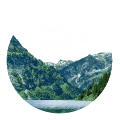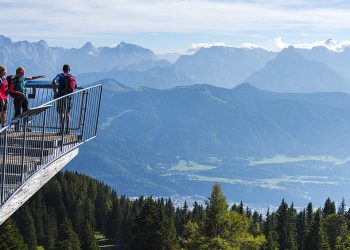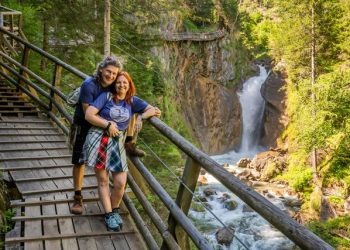The Story of Hochosterwitz Castle
Hochosterwitz Castle (in German: Burg Hochosterwitz) was built as early as the 9th century on an isolated hill, 150 meters above sea level. As a fortified and protected place, the castle served as a refuge for the local population during the Turkish invasions of the 11th and 12th centuries.
The castle was owned by the Archbishops of Salzburg but was given to the important noble family of Osterwitz. The family owned the castle for several hundred years, but in the 15th century, after the last heir fell into deep debt, it passed into the possession of Emperor Frederick III of the House of Habsburg.
For several decades during the Turkish invasions in the 16th century, the castle stood strong against repeated attacks. It was severely damaged but never conquered. As a token of the Emperor’s appreciation for the help and courage of the local residents, the castle was given to Christoph Khevenhüller von Aichelberg, who was the head of the regional administration. Christoph Khevenhüller renovated the castle, and eventually, his nephew purchased it from the emperor for a handsome sum. After its acquisition, the Khevenhüller family continued to expand and fortify the castle.
They established a large armory and 14 defensive gates along the road leading to the castle. Each gate was built differently and included a different type of locking system. According to local legend, no foreign army that came to the area ever managed to get past the 4th gate, called Engelstor (Angel’s Gate).
An ancient church from the 10th century stood on the castle grounds, but it was completely renovated in the 16th century. The church’s prayer hall is ornate, and the main altar was built by the famous sculptor Michael Pacher from South Tyrol. Inside the church, there is a burial site containing the tombs of the Khevenhüller family members.
From then until today, the castle has remained in the possession of the Khevenhüller family and has been wonderfully preserved, with no significant changes since the 16th century. Today, it serves as an interesting historical museum.
Visiting Hochosterwitz Castle
Several rooms in the castle are open to visitors. It is recommended to start your visit by walking along the path leading to the castle. The winding path is 620 meters long, and along it are the 14 ancient gates that were used to defend the castle. Next to each gate, there is an explanation of its unique locking mechanism.
If you prefer not to walk up the hill, there is a direct lift to the castle entrance. This is an external lift that ascends alongside the rock face of the hill. The lift ride requires an additional fee, beyond the cost of the entrance tickets.
Inside the castle, a guided tour takes you through the ancient rooms. You can see the antique furniture, beautiful paintings, and diverse sculptures. The tour also includes a visit to the castle’s armory.
In the outer courtyard, there is a small restaurant with outdoor seating on beautiful sunny days.
Essential Information for Your Visit
Opening Hours:
The castle is open from April 1st to October 31st.
- April 1st to April 30th: Tuesday to Sunday from 10:00 AM to 5:00 PM. Last entry at 3:30 PM.
- May 1st to May 30th: Every day from 10:00 AM to 5:00 PM. Last entry at 3:30 PM.
- May 31st to August 31st: Every day from 9:00 AM to 6:00 PM. Last entry at 4:30 PM.
- September and October: Tuesday to Sunday from 10:00 AM to 5:00 PM. Last entry at 3:30 PM.
Costs (including parking and guided tour):
- Adult: €18
- Child (6-15): €11
- Child under 6: Free
- Senior: €18
- Family Ticket: €47
- Lift ride: €10
Free entry to the castle for holders of the Carinthia Card (Kärnten Card). Payment is required for the lift only.
Official Website
Address:
Hochosterwitz 1, 9314 Launsdorf
Map:
The beautiful castle is a short distance from the city of Klagenfurt and the beautiful, clear Lake Wörthersee. Near the lake, there is a wonderful miniature park where you can see a model of the castle and many other beautiful buildings from all over the world. Read more about the Minimundus miniature park in Klagenfurt.


















